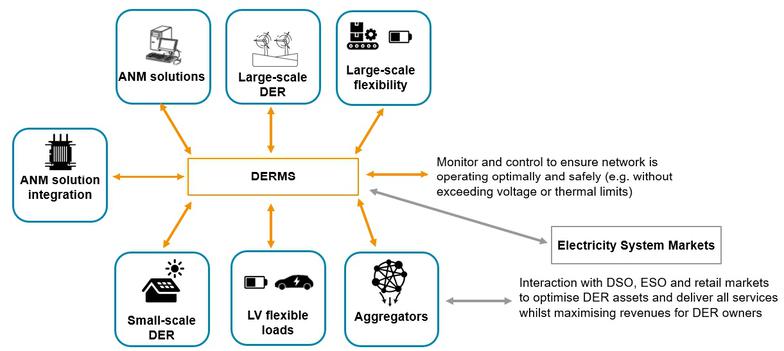Energy Field Security, Inc.
Call Today! 970-216-3162
Distributed Energy Resources (DER)
Optimizing the Distribution Grid The current pace of change within the electric grid is challenging. In the past, when electric utilities needed to evolve, they might have a decade or more to do so. Today, the operating environment is changing dramatically and rapidly — the landscape is likely to transform more in the next 10 years than in the previous 100. At the same time, due to the continually evolving energy mix, distribution operators are experiencing an ongoing increase in grid complexity coupled with rising uncertainty due to changing business and regulatory models.Successfully meeting these new demands requires digital transformation. The world’s electric grids must become stronger and smarter, as well as more flexible and resilient. Utilities are increasingly turning to distribution optimization to address common challenges:
• Delivering more with less – network efficiencies and operational productivity
• Identifying and preventing issues — blending historical data and forecasting to drive predictability
• Providing the right amount of power at exactly the right time — balancing supply and demand The forward-thinking utility recognizes distribution optimization as a critical enabler of next-generation distribution grids, which are maximally efficient, reliable, and, ultimately, sustainable.
The opportunity to optimize Current industry drivers demand utilities deliver clean, reliable, and affordable energy. Yet the grid is becoming increasingly complex as more distributed generation (DG) and distributed energy resources (DERs), such as photovoltaic (PVs), smart inverters, energy storage, and electric vehicles (EVs), are deployed. Today’s utilities must integrate these new players as well as adapt to the associated multi-directional flow of electrons. Simultaneously, the volume of smart sensors and meters utilized on the grid is steadily increasing by multiple orders of magnitude. Meanwhile, distribution operators are encountering an increasing volume and speed of data generated by the grid that presents a significant challenge to consume, understand, and act upon.To protect business and improve results, utilities must:
• Protect and increase current reliability levels
• Decrease outage response times
• Improve power quality
• Integrate DG and DERs
• Provide resiliency to natural disasters and other threats
The control room requires operationally relevant analyses and optimizations for both advisory or fully automated (closed-loop) modes. Utilities must also forecast weather impact on generation and load as well as understand net loads and automated restoration implications in outage scenarios. Without digital transformation, and software delivering greater automation and control, utilities are missing opportunities to better connect, orchestrate, and optimize their distribution grids.
Evolution towards an integrated holistic approach for networks: From Active Network Management to Distributed Energy Resource Management
Figure 1: Distributed Energy Resource Management concept
While a lot of the solutions to the issues raised by the energy transition can be solved individually, the integration of Active Network Management (ANM)solutions offers greater opportunities to effectively address at lower cost the many challenges that electricity networks, and the electricity system as a whole is currently facing.The emerging trend is the next evolution of the electricity system from individual or centrally controlled solutions towards autonomous Distributed Energy Resource Management Systems(DERMS).
Distributed Energy Resource Management Systems DERMS is a term that is evolving beyond just the control of distributed generation and consumer assets. Its integration with other network operational assets such as Advanced Distribution Management Systems can extend its functionality to wider electricity management. In that sense, DERMS can establish the connectivity between different physical systems and markets through their communications and control infrastructure providing the capability to monitor, manage and integrate low-carbon technologies and distributed energy assets from both an engineering and markets perspective, including energy, balancing, ancillary services, and flexibility markets.DERMS use real-time data analytics to autonomously control DERs and ANM solutions to maximize network utilization and hence accommodation of generation and low carbon technologies such as EV charging and electric heating. It enables local substations to analyses millions of data points to provide visibility of how the network is running at any given time, enabling the network to reconfigure itself and even adapt protection settings where necessary to enable higher volumes of electricity to flow through the system.DERMS is enabling the integration of technologies and solutions derived from a range of smart network innovation projects, including flexible connections and services, integrated transmission and distribution regional development plans, network meshing, reactive power management and EV charging management, and will provide a foundation for integrating future smart solutions.
Business Models for Distributed Energy Resources:

